Osmanli Devleti
OTTOMAN MADRASAHS AND MOSQUE TRADITIONS
OTTOMAN MADRASAHS AND MOSQUE TRADITIONS
Muhammad (SAW), the prophet of Islam, conveyed his message in his masjid (small mosque) in Medina. It was the first academy in the history of Islam. Roughly 70 of Prophet Muhammad’s (SAW) unmarried companions constantly lived in the yard of the prophet’s masjid and did not leave his side. These people were called “Ashab al-Suffa” (those who lived in the yard). They recorded the verses of the Quran and hadith(prophetic sayings) and read these recordings to those who were not present at the time. Ashab al-Suffa played the most important role in spreading Islam to the remote regions and passing it down to future generations. Scholars that were meant to be sent to tribes were also chosen from among Ashab al-Suffa. They knew every Quran verse by memory and were familiar with the Islamic sciences.
In the world of Islam, higher education together with religious and literary sciences was practiced in masjids and sometimes in the houses of the “mudarris” (professors) in accordance with medieval traditions.
Starting from the ninth century A.D., separate madrasahs began to be established next to masjids. These madrasahs were called “mosque” which means “gatherer” in Arabic. In Europe, the Latin word “universitatis” was used as the equivalent of the word “mosque.”
Universities were divided into kulliyahs (faculties) and each kulliyah offered education in a different field of science. Madrasahs featured a lecture hall, conference hall and classes, offices and lodgings for professors, masjid, library, infirmary, student dorms, baths and a dining hall. Madrasahs were not the properties of the state – they were established and managed via waqfs (foundations). Governments could not interfere with madrasahs, which provided the opportunity for scientific / intellectual autonomy in the Muslim world.
Founded in Fez, Morocco in 859, the University of Qarawiyyin is the oldest university in the world that is still active. The Qarawiyyih Library was founded by a woman. In the 9th century, Fatima al-Fihri, the daughter of a wealthy merchant from Tunisia’s Kairouan, arrived in Fez and began laying include the library, the Qarawiyyin Mosque, and oldest higher education institution in the world –with alumni including the Jewish philosopher Maimonides, the great Muslim historian Ibn Khaldun, and the Andalusian diplomat Leo Africanus.
The University of Cordoba, founded in Andalusia in 786, was the oldest university in Europe. French-descended Pope Silvester II (999-1003) graduated from the University of Cordoba. Universities of Kairouan and Zaytouna were founded in Tunisia in 726 and 732 respectively and they were followed by the Al-Azhar University in Cairo, Egypt in 972. All these institutions operated within a huge mosque complex in accordance with the traditions of the early Islamic era.
Universities separated from mosques
Universities that were independent from mosques were established in the 11th century. These universities that were founded on the initiatives of the grand vizier of the Seljuk Empire, Nizam al-Mulk, are called “Nizamiyya Madrasahs.” The first one of these universities was founded in Baghdad in 1076 and its branches were opened in cities such as Esfahan, Rey, Nishapur, Merv, Balkh, Herat, Basra, Mosul and Amul. Famous scholars including al-Ghazali taught in these institutions. “Nizamiyya Madrasahs” were followed by “Nuriyah Madrasahs,” which were founded by the Seljuk governor Nur ad-Din in Damascus. These chains of madrasahs, founded in 1168 for the first time, spread to Damascus and Egypt in time and served as models to the future Ottoman madrasahs.
Back then, cities such as Damascus, Baghdad, Cairo, Kairouan, Cordoba, Rey, Bukhara, Samarkand, Herat, Tabriz, Istanbul, Kazan and Delhi were cultural centers just like Hejaz. These cities became hubs for distinguished scholars; rooted madrasahs and libraries full of priceless books were established and the number of written and published books increased.
Those who wanted to specialize in sciences flocked to these cities and most of them returned to their hometowns in efforts to teach the knowledge they required to their fellow townsman. In the world of Islam, it was possible to come across well-educated scholars who delivered lectures on all kinds of science and gave fatwa, even in the simplest villages.
Ottoman madrasahs were the continuation of the Seljuks’ madrasah model. The very first Ottoman university was founded in the mid-14th century in İznik. The Sahn-ı Seman Madrasah (madrasah with eight lecture halls), founded by Mehmed the Conqueror (Sultan Mehmet II) after he conquered Istanbul, was a university that was a match to its equivalents in Europe. By establishing the university, the education system in the land of the Ottomans was designed as well. Those who graduated from this madrasah were assigned to the highest offices in the Ottoman state such as the offices of judges, muftis and tax officers. The Ottoman universities took their final shape during the reigns of Ottoman sultans Bayezid II and Süleyman the Magnificent. Süleymaniye Madrasahs were institutions that offered graduate programs. Convenient to the tradition of the time, these universities provided education on theology, law, medicine and philosophy. These madrasahs continued to operate until they were closed by the republican government in 1924.
Written By: Murat Mert
Osmanli Devleti
The Clock Towers From The Archive Of Sultan Abdul Hamid
The Clock Towers From The Archive Of Sultan Abdul Hamid
The clock, which provided great convenience to people with its invention, was located in the city squares at a size and height that everyone could see before it got smaller and went into pockets. Although they were built in the West, these historical buildings, which became works of art in the East, were the most striking architectural works of the cities. On the 25th anniversary of Sultan AbdulHamid’s accession to the throne, it spread to the interior of Anatolia, with the governors sending an edict to build a clock tower. We have compiled the photographs of clock towers that have witnessed centuries from the archive of Sultan AbdulHamid.

Amasya Clock Tower

Ankara Clock Tower

Baghdad Clock Tower
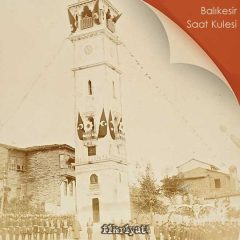
Balıkesir Clock Tower
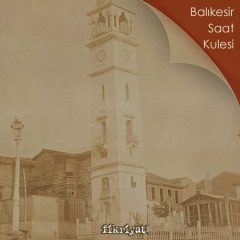
Balıkesir Clock Tower
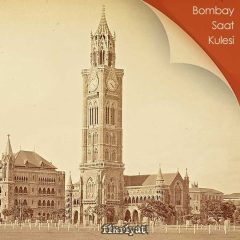
Darülfünun building and clock tower in Mumbai, India
Architectural works of the period reflect this feature because they were built in baroque, empire, eclectic and neo-classical styles. Clock towers are usually plain stone structures. Clock towers in Tophane, Yıldız Palace, Dolmabahçe, İzmir and İzmit are the most ornate.
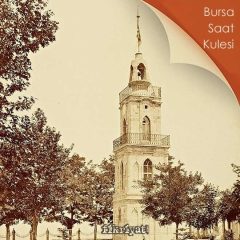
Clock tower in the garden of Osman Gazi tomb
The clock tower located in Tophane Park in Bursa; It was first built during the reign of Sultan Abdulaziz. It was demolished at an unknown date, however, until the 1900s. Its construction started again in 1904 and was completed on August 31, 1905. It was put into service with a ceremony by the Governor Reşit Mümtaz Pasha on 31 August 1906 in honor of Abdülhamid’s accession to the throne.

Edirne Clock Tower
The tower, which became known as the “Macedonian Clock Tower” after the wooden floors and clocks that had been built by Hacı İzzet Pasha, one of the governors of Edirne, on the tower in 1866-1867, was severely damaged in the 1953 earthquake.

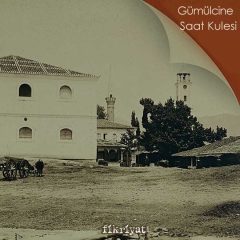
Gümülcine Clock Tower
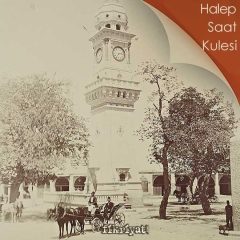
Halep Clock Tower
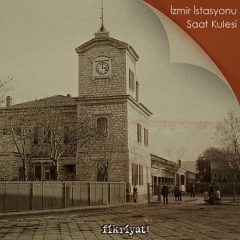
İzmir Station Clock Tower
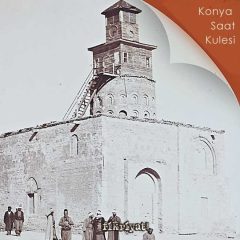
Konya Clock Tower
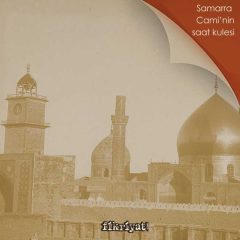
Samarra Cami (Mosque) Clock Tower
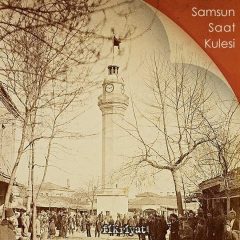
Samsun Clock Tower
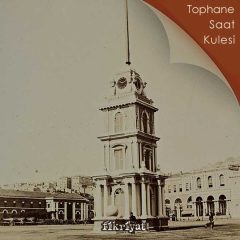
Tophane Clock Tower
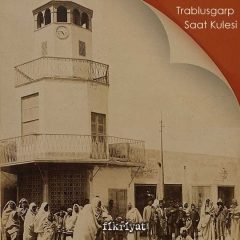
Tripoli Clock Tower
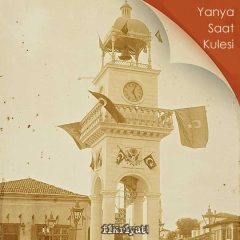
Yanya Clock Tower
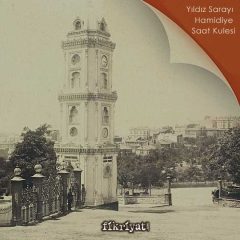
Yıldız Palace Hamidiye Clock Tower
Hamidiye Clock Tower is located in Yıldız district of Beşiktaş district of Istanbul. As it can be understood from the tugra on the entrance gate, it was built by AbdulHamid II between 1889 and 1890. The architect of the clock tower, which was built with four sides (octagon) with broken corners, is Sarkis Balyan. There are four inscriptions on the first floor of the tower, a thermometer and barometer on the second floor, and a clock room on the top floor. There is a compass on the decorative roof of the clock tower and a weather vane on its top.
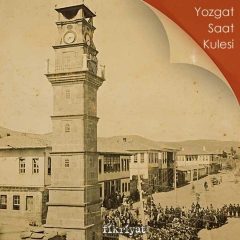
Yozgat Clock Tower
Osmanli Devleti
COUNTRIES RULED FOR YEARS BY THE OTTOMAN
COUNTRIES RULED FOR YEARS BY THE OTTOMAN!
1. Turkiye (…)
2. Bulgaria (545 years)
3. Greece (400 years)
4. Serbia (539 years)
5. Montenegro (539 years)
6. Bosnia and Herzegovina (539 years)
7. Croatia (539 years)
8. Macedonia (539 years)
9. Slovenia (250 years)
10. Romania (490 years)
11. Slovakia (20 years) Ottoman name: Uyvar
12. Hungary (160 years)
13. Moldova (490 years)
14. Ukraine (308 years)
15. Azerbaijan (25 years)
16. Georgia (400 years)
17. Armenia (20 years)
18. Southern Cyprus (293 years)
19. Northern Cyprus (293 years)
20. Southern lands of Russia (291 years)
21. Poland (25 years)-protection- Ottoman name: Lehistan
22. The southeast coast of Italy (20 years)
23. Albania (435 years)
24. Belarus (25 years) -protection-
25. Lithuania (25 years) -protection-
26. Latvia (25 years) -protection-
27. Kosovo (539 years)
28. Vojvodina (166 years) Ottoman name: Banat
29. Iraq (402 years)
30. Syria (402 years)
31. Israel (402 years)
32. Palestine (402 years)
33. Urdun (402 years)
34. Arabia (399 years)
35. Yemen (401 years)
36. Oman (400 years)
37. United Arab Emirates (400 years)
38. Qatar (400 years)
39. Bahrain (400 years)
40. Kuwait (381 years)
41. Western lands of Iran (30 years)
42. Lebanon (402 years)
43. Egypt (397 years)
44. Libya (394 years) Ottoman name: Tripoli
45. Tunisia (308 years )
46. Algeria (313 years)
47. Sudan (397 years) Ottoman name: Nubia
48. Eritrea (350 years) Ottoman name: Habes
49. Djibouti (350 years)
50. Somalia (350 years) Ottoman name: Zeyla
51. Kenyan beaches (350 years)
52. Tanzanian beaches (250 years)
53. Northern regions of Chad (313 years) Ottoman name: Reşade
54. Part of Niger (300 years) Ottoman name: Kavar
55. The northern lands of Mozambique (150 years)
56. Morocco (50 years) -protection-
57. Western Sahara (50 years) -protection-
58. Mauritania (50 years) -patronage-
59. Mali (300 years) Ottoman name: Gat Kazası
60. Senegal (300 years)
61. Gambia (300 years)
62. Guinea-Bissau (300 years)
63. Guinea (300 years )
64. Part of Ethiopia (350 years) Ottoman name: Habeş (Abyssinian)
Although not officially located within the borders of the Ottoman Land borders, the places that are actually connected to the Caliphate are:
65. Muslims of India -Pakistan-
66. East India Muslims -Bangladesh-
67. Singapore
68. Malaysia
69. Indonesia
70. Turkestan Khanates
71. Nigeria
Osmanli Devleti
INEGOL ITS EARLY OTTOMAN CONQUEROR
Inegöl & its early Ottoman conqueror, Turgut Bey
(Translated from the official Inegöl City & Inegöl Chamber Of Commerce & Industry webpages & also some available translations of early chronicles)
If you want, you can skip sections on ancient history of İnegöl & go straight to early Ottoman history [that is being showcased ın Kuruluş Osman Season 3]
About the Name of İnegöl
The name of İnegöl in the Byzantine Period was Angelacoma. However, a source has not yet been found to confirm the claims that the name İnegöl is the distorted pronunciation of Angelacoma.
In the sources, it is seen that the name İnegöl was written in different forms. However, it is known that in most of the Ottoman sources it was written as Ayna-Göl or İne-Göl.
Evliya Çelebi, tells in his travel book that İnegöl is derived from Ezinegöl; He narrates that İnegöl took the name “Ezinegöl” because it was conquered on Friday, that is, Ezine day according to the parlance of those days, and that in time, the “Ez” part at the beginning was removed and it was called only İnegöl.
Archeological Surveys.
The history of İnegöl, according to the findings of the archeological surveys carried out in 1847 and 1942, dates back to 3000 BC. There are 6 mounds of archeological interest in İnegöl, namely Cumatepe, İnegöl 2, Şıbalı, Boğazköy, Palangatepe and Kurşunlu.
Today, the mound in the middle of the city, around the municipality headquarters, is called Cumatepe.
During excavations carried out by Bursa Archeology Museum in 1999 on the Cumatepe mound in the city center, mixed aged objects ranging from the Late Ottoman to the Chalcolithic Period were found.
Inegol in Antiquity
İnegöl has been invaded frequently due to its strategic location on military and commercial routes since ancient times.
It has been determined that Phrygians, Lydians, Persians and Macedonians successively ruled in İnegöl, which has a history of 5000 years. In 74 AD, it came under the rule of the Roman Empire.
And after the split of the Roman Empire in 395 AD, İnegöl passed under the rule of the Eastern Roman Empire (Byzantine). It continued to be under Byzantine rule as a Tekfurluk center until the establishment of the Ottoman Principality by Osman Ghazi.
The Establishment of the Ottoman State and the Conquest of İnegöl
Osman Bey, who became the head of the principality in 1281 upon the death of his father Ertuğrul Bey, began the conquests against Byzantium soon after.
[Official Webpage from Inegol Chamber Of Commerce & Industry also adds that Osman Bey initially followed a policy of maintaining cordial, good working, relationships with the feudal landlords in Bursa, Bilecik and surroundings. Except with Ayah Nikola.]
In a battle with Ayah Nikola, the battle of Ermeni Beli in 1284, he and his men had to retreat after the martyrdom of Baykoca, the son of his brother, Savcı Bey.
Baykoca was the first martyr of the dynasty and his grave is in Hamzabey District of İnegöl.
Despite the retreat (and Bayhoca’s martyrdom), Ottoman history began with this first military operation.
The foundations of a state that would rule for six centuries were laid in the quadrangle of Söğüt, Bilecik, Domaniç and İnegöl in a short period of time.
After a while, Osman Bey raided Kulaca Castle near İnegöl and conquered the castle. The year of this conquest event was recorded as Hijri, 684, Gregorian, 1285 in the chronıcles of Aşıkpaşazade, and it was stated that this conquest was the first conquest of Osman Gazi.
[It is also mentioned in some early chronicles that deeply affected by Bayhoca’s martyrdom, Osman Bey never visited Angelacoma (İnegöl) and surroundings for approximately 14-15 years, while continuing with conquering other castles – the Karcahisar (İnönü Castle), Bilecik and Yarhisar Castles. A great many friends of feudal landlord of Angelacoma were thus erased from history]
Concerned about these developments, İnegöl tekfuru, Nikola, formed an alliance with other tekfurs to eliminate Osman Bey.
Osman Bey, becoming aware of this alliance, assigned the conquest of İnegöl to his comrade, Turgut Alp.
[in many early sources, Turgut Alp is referred to as Osman Bey’s dear friend & comrade – which make it reasonable to assume that age wise, he ‘might’ have been Osman Bey’s contemporary. This is the more widespread understanding & the reason why in the earlier TRT series on Osman Bey, he was shown as Osman Bey’s contemporary & friend]
With the siege plan implemented by Turgut Alp, İnegöl was finally conquered in 1299. After this conquest, Osman Bey handed over the administration of İnegöl and its surrounding villages to Turgut Alp.
[[According to early Ottoman sources, Turgut Alp was also with Osman Bey during the conquest of ‘Yarhisar’ and was then commissioned with the conquest of Inegol. In these sources, it is also mentioned that Turgut Alp first sieged the city and then Osman Bey came to his aid. It was also mentioned that during the conquest of Inegol, the city’s Tekfur, Aya Nikola, was executed and thereafter, Osman Bey assigned the administration of Inegöl & ıts surrounding villages to Turgut Alp]
The region where Inegol’s Kirles (Paşaören), Süle, Genci (Turgutalp Village), Gelene (Kayapınar) and Kıran Neighborhoods are located were called the Turguteli-Turgutlar district.
Turgut Alp, who also contributed significantly in the subsequent conquest of Bursa by Sultan Orhan, passed away in the village of Genci (today’s name Turgut alp Köy Mahallesi), where he had settled in his later years.
His mausoleum is on a large hill overlooking İnegöl in Turgut Alpköy Mahallesi, and a memorial ceremony is held around the mausoleum every year on the day of Hıdrellez.
The naming of a neighborhood, a village, an Anatolian High School and a mosque in İnegöl after Turgut Alp is an indication of the place this highly successful early Ottoman commander holds in the collective memory of generations that came after him.
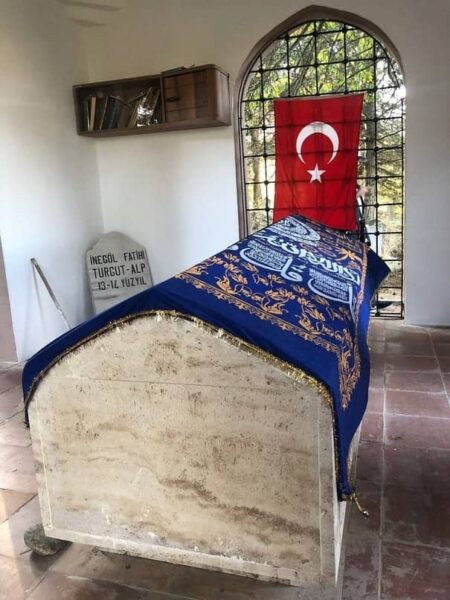
Turguts Burial Place







































